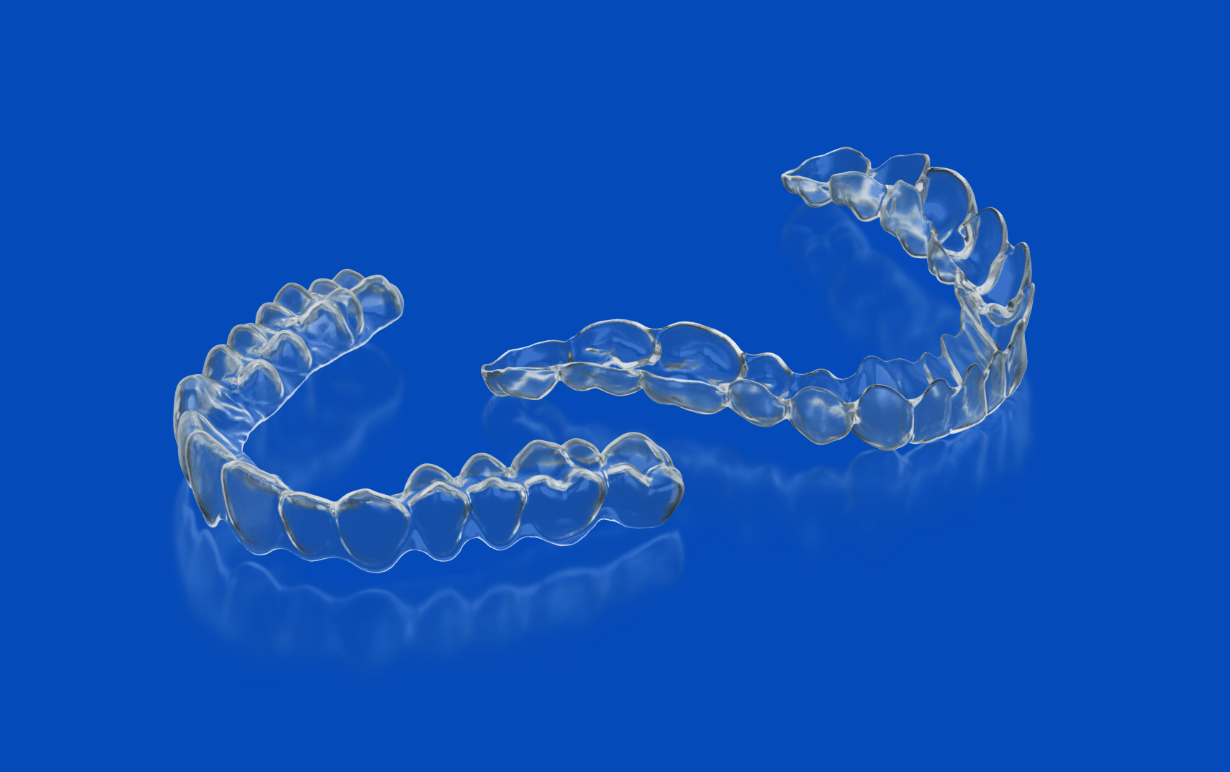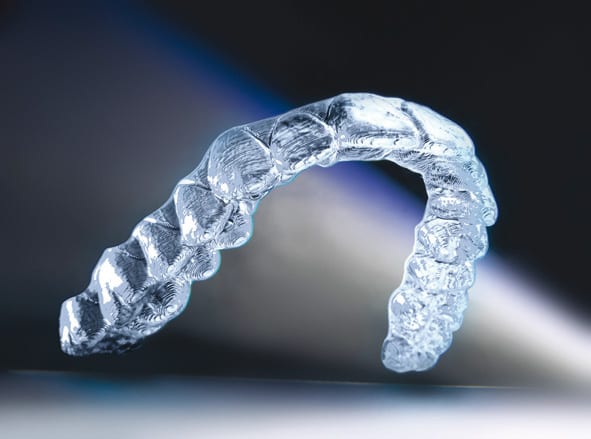When it comes to maintaining that perfect smile post braces, choosing the right retainer is crucial. With various orthodontic retainer types available, two popular choices often debated are Hawley and clear retainers. Both have their own sets of advantages and disadvantages, but which one is truly more effective? Let's dive into what studies and orthodontists have to say about the effectiveness of these retainers.
Table of contents
Understanding the Basics of Retainers
Retainers are essential devices used after braces or invisible aligners to keep teeth in their new, correct positions. Without a retainer, teeth may gradually shift back to their original misaligned state. Thus, a dental retainer is a vital part of the orthodontic process.
Importance of Retainers
Retainers play a crucial role in ensuring the long-term success of orthodontic treatment. Once braces are removed, teeth can naturally drift back to their initial positions due to the elasticity of the surrounding periodontal tissues. This is why retainers are necessary to stabilize the teeth until the bone and tissues adapt to their new alignment. The consistent use of retainers significantly minimizes the risk of relapse.
Evolution of Retainer Designs
The design of retainers has evolved over the years to cater to the diverse needs of patients. Initially, retainers were bulky and less aesthetically pleasing. However, advancements in dental technology have led to the development of more discreet and comfortable designs. Today, patients have a choice between traditional retainers like the Hawley, and more modern options like clear retainers, each offering unique benefits.
The Role of Orthodontists
Orthodontists are pivotal in guiding patients through the retainer selection process. They consider various factors such as the patient's dental history, lifestyle, and personal preferences. Through a thorough assessment, orthodontists recommend the most suitable retainer type to ensure optimal results. Their expertise ensures that the chosen retainer will effectively maintain the desired tooth alignment.
Types of Retainers
There are primarily three types of retainers:
Hawley Retainers: Made of acrylic and metal wires, these are adjustable and can be customized to fit the roof of the mouth or along the inside of the lower teeth.
Clear Retainers: Also known as invisible aligners or Essix retainers, these are made from clear plastic and fit snugly over the teeth, making them less noticeable.
Fixed Retainers: These are permanently bonded to the teeth and are often used for the lower front teeth.
Hawley Retainers
Hawley retainers have been a staple in orthodontics due to their versatility and durability. Constructed from a combination of metal wires and acrylic, they are easily adjustable by orthodontists to accommodate minor tooth movements. This adjustability is particularly useful during the initial months following braces removal when slight shifts may occur.

Clear Retainers
Clear retainers, often referred to as Essix retainers, are popular for their discreet appearance. Made from transparent plastic, they provide a snug fit over the teeth. This close fit not only enhances comfort but also ensures that the retainer remains inconspicuous. They are ideal for patients who prioritize aesthetics in their post-orthodontic care.

Fixed Retainers
Fixed retainers, also known as bonded retainers, consist of a thin wire cemented to the back of the teeth. They are typically used for the lower front teeth, which are prone to shifting. The permanence of fixed retainers eliminates the need for patient compliance, making them a reliable option for maintaining tooth alignment over time.

Hawley Retainers: Benefits and Drawbacks
Advantages of Hawley Retainers
Durability: Hawley retainers are known for their robust construction. The metal and acrylic components make them less prone to damage. This durability ensures that patients can rely on them for long-term use without frequent replacements.
Adjustability: The wires can be adjusted for minor movements of the teeth, providing orthodontists with some flexibility to refine alignment. This adjustability is beneficial for making small corrections without needing new appliances.
Longevity: With proper care, Hawley retainers can last several years. Their sturdy build and the ability to be cleaned and maintained easily contribute to their extended lifespan.
Drawbacks of Hawley Retainers
Visibility: The metal wire is visible, which might be a concern for those looking for a discreet option. For patients who are conscious about their appearance, the visibility of the metal components can be a drawback.
Comfort: Some users find Hawley retainers less comfortable due to the acrylic plate. The bulkiness of the acrylic can cause discomfort, especially during the initial adjustment period.
Maintenance and Care
Maintaining a Hawley retainer involves regular cleaning to prevent plaque buildup on the acrylic and metal parts. It is advisable to use a soft toothbrush and non-abrasive cleaner. Proper storage in a protective case when not in use is essential to avoid accidental damage or loss.
Clear Retainers: Pros and Cons
Benefits of Clear Retainers
Aesthetic Appeal: As the name suggests, clear retainers are nearly invisible, making them a preferred choice for those conscious about appearance. This transparency allows wearers to maintain their confidence while ensuring effective tooth retention.
Comfort: Their snug fit over the teeth often makes them more comfortable than other types. The smooth plastic material minimizes irritation and adapts well to the contours of the mouth.
Ease of Use: They are easy to remove for eating and cleaning. This convenience encourages consistent use and proper oral hygiene practices, reducing the risk of cavities and gum issues.
Disadvantages of Clear Retainers
Fragility: Clear retainers can crack or break more easily than Hawley retainers. The thin plastic material, while comfortable, is more susceptible to damage if not handled with care.
Replacement Frequency: They typically require more frequent replacements due to wear and tear. The material can become discolored or lose its shape over time, necessitating periodic replacements to ensure continued effectiveness.
Maintenance and Care
Clear retainers require gentle cleaning with a soft brush and mild soap to maintain their transparency. It is important to avoid hot water, which can distort the retainer's shape. Regular inspections for signs of wear are recommended to ensure timely replacements.

What Studies Say About Retainer Effectiveness
Research has consistently shown that both Hawley and clear retainers are effective in maintaining teeth alignment after orthodontic treatment. However, the choice often boils down to personal preference and specific orthodontic needs.
Retention Efficacy
Studies indicate no significant difference in the retention efficacy between Hawley and clear retainers. Both types effectively prevent teeth from shifting when used as directed by an orthodontist. The choice of retainer often depends on individual patient circumstances rather than a difference in effectiveness.
Patient Satisfaction
Clear retainers often score higher on patient satisfaction due to their aesthetic appeal and comfort. However, Hawley retainers are favored for their durability and adjustability. The decision is influenced by what patients value more—durability or aesthetics.
Compliance
Success with any retainer largely depends on patient compliance. Clear retainers have shown higher compliance rates, possibly due to their comfort and inconspicuous appearance. Patients are more likely to adhere to wearing schedules when they find the retainer comfortable and less obtrusive.
Insights from Orthodontists
Orthodontists emphasize that the best retainer for teeth straightening is the one that a patient is most likely to wear consistently.
Professional Recommendations
Initial Retention Phase: Some orthodontists recommend clear retainers immediately after braces due to their snug fit, which can be crucial in the initial retention phase. This fit helps stabilize teeth quickly during the critical post-treatment period.
Long-Term Use: For long-term use, Hawley retainers might be advised due to their durability and adjustability. They offer flexibility for minor adjustments that may be needed over time.
Patient Lifestyle: Consideration of the patient's lifestyle and preferences is key. For instance, a patient involved in contact sports might benefit from a more durable Hawley retainer. Orthodontists tailor their recommendations to suit the individual needs of each patient.
Customization and Adaptation
Orthodontists often customize retainers to fit the specific needs of each patient. This personalization ensures that the retainer not only fits well but also aligns with the patient's lifestyle and aesthetic preferences. Regular follow-up appointments allow orthodontists to monitor progress and make necessary adjustments.
Long-term Monitoring
The role of orthodontists extends beyond recommending a retainer type. They provide ongoing support and monitoring to ensure that the retainer continues to fit well and function effectively. Periodic check-ups allow for timely interventions if any issues arise, ensuring the longevity of the treatment results.
Practical Considerations
Orthodontists emphasize that the best retainer for teeth straightening is the one that a patient is most likely to wear consistently.
Care and Maintenance
Regardless of the type of retainer, proper care and maintenance are essential for effectiveness and longevity.
Cleaning: Both types require regular cleaning to prevent bacterial buildup. The best way to clean retainers is by using a soft toothbrush and mild soap. Avoid hot water which can warp the retainer. Consistent cleaning routines help maintain oral health and prevent unpleasant odors.
Storage: When not in use, store your retainer in a protective case to prevent damage. Proper storage minimizes the risk of accidental breakage and loss, ensuring the retainer is always ready for use.
Cost Considerations
The cost of retainers can vary based on the type and the orthodontist. Clear retainers might require more frequent replacements, potentially increasing long-term costs compared to Hawley retainers. It is important to consider both initial and ongoing expenses when choosing a retainer type.
Insurance and Financial Planning
Some dental insurance plans may cover part of the cost of retainers. Patients should check with their insurance provider to understand their coverage options. Financial planning and discussing payment plans with an orthodontist can help manage the costs associated with maintaining a retainer.
Do orthodontists still use Hawley retainers?
Yes, many orthodontists continue to prescribe Hawley retainers due to their versatility. These removable devices are easy to take out for meals and cleaning, and because they’re not worn full-time, they can be more convenient for long-term maintenance. Their durability and ability to be adjusted over time also make them a trusted option in many cases.
Why don't orthodontists do permanent retainers anymore?
While permanent retainers offer the benefit of consistent retention without patient compliance, they can be difficult to maintain. Because the wire is bonded behind the teeth, it can trap food and plaque, making hygiene more challenging. For patients who struggle with regular flossing or oral care, this can lead to increased risk of decay or gum issues, which is why some providers now recommend removable options instead.
What are the latest advancements in retainers?
Retainer technology has evolved, especially with fixed options. One major innovation is the use of flexible bonding wires in permanent retainers. These wires conform more naturally to the shape of your teeth, improving comfort and reducing the chances of breakage. Additionally, materials used in clear removable retainers have become more durable, stain-resistant, and easier to replicate with 3D printing.
Is a hawley retainer better than a clear retainer?
Each retainer type has its strengths. Hawley retainers are more durable than many clear options and can be adjusted over time, making them a solid long-term choice. They're also easier to repair if damaged. However, some patients prefer clear retainers for their low-profile appearance and snug fit. The best choice often depends on lifestyle, treatment goals, and personal preference.
Conclusion
In the debate of Hawley vs clear retainer effectiveness, both types have their merits. The decision should be based on individual needs, lifestyle, and orthodontist recommendations. Ensuring consistent use and proper care is crucial for maintaining that beautifully aligned smile.
As you navigate the options, consulting with your orthodontist will provide personalized advice tailored to your dental health needs. Remember, the ultimate goal is to preserve the results of your orthodontic journey and keep your smile radiant for years to come. Whether you choose the durability of a Hawley retainer or the aesthetic appeal of a clear retainer, commitment to wearing and maintaining the retainer is key to sustaining the success of your orthodontic treatment.






